UX TRENDS FOR 2023
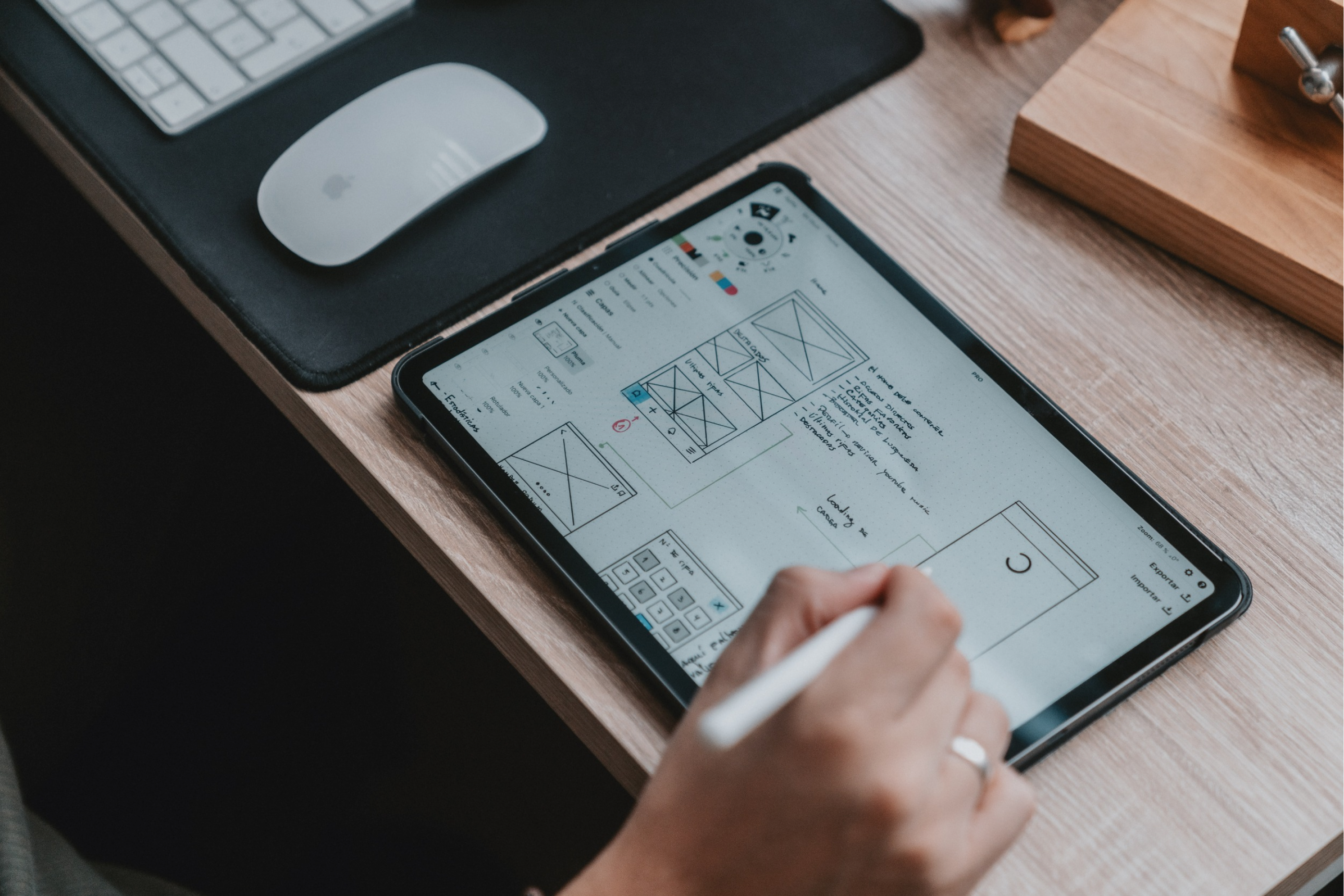
Intro
I look back at 2022 and think, wow what a year. So much has happened at QueensLab. And if you look at the rest of the world, just as much has happened. In the world we at QueensLab lives in (tech and design) we might will see paradigm shift.
People are simply beginning to understand the importance of a strong customer experience in the digital world. The landscape is changing all the time and you have to keep up with it to stand a chance.
A shift in focus has started from creating websites that hold information, you know corporate handshake (yawn) to becoming more of an experience, whether it's banking or a theme park. Experience based websites are here to stay.
But above said, it is very important not to forget another big trend in 2022 that in 2023 will not be a trend anymore but something we have to relate to. And that is accessibility.
But let's dive into all the exciting trends in 2023.
#1. Total experience - Not just a website
When I look at all the different trends, I see a clear common denominator. And that is that people are moving away from the traditional way of building a website which is very much inside-out thinking, i.e. you focus on yourself and show how good you are.
The right way is the reverse. Start by looking at the user's needs and create digital experiences for that. Create a total experience with the user in focus.
This is a trend I personally support very much and believe in very strongly. The digital world is around us all the time wherever we go. Let's create experiences that enliven and energize us, let's create new exciting things instead of doing what we've always done.
That said, it's important to remember that every thing has its place.
Example - visit site: www.masardestination.com/en/experience
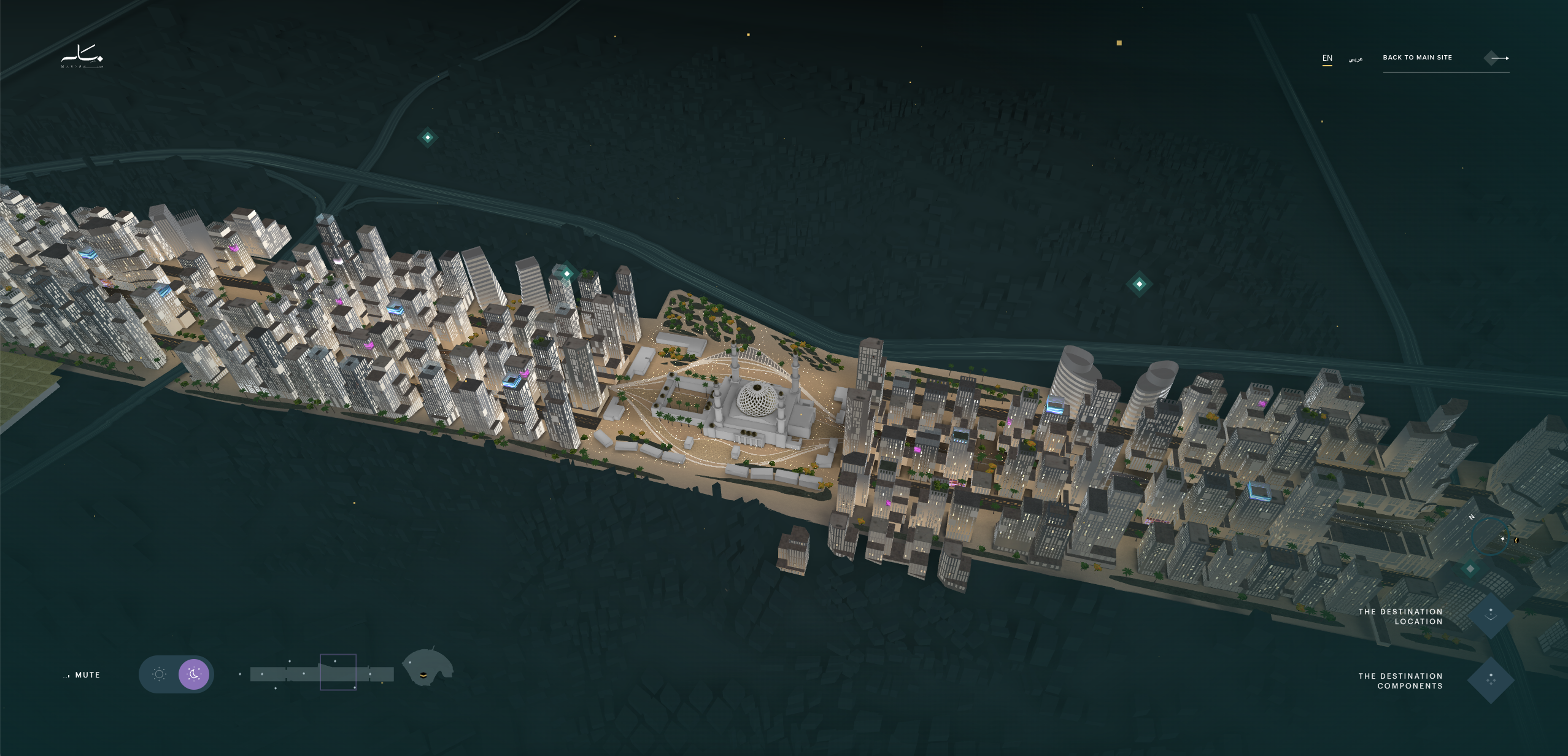
#2. Mass migration from Adobe XD to Figma?
Okay, this one is interesting. No one has missed Adobe's $20 billion acquisition of Figma!!! I'll take that again $20 billion!!!
But, Figma will stay around despite this. Figma co-founder and CEO Dylan Field announced in his statement that Figma will continue to operate independently and continue to improve Figma Design and FigJam. In addition to this, Figma will definitely benefit from Adobe's technologies in digital imaging, video, vector, 3D, AI, machine learning, etc.
Adobe has also acknowledged that Figma is superior to Adobe XD in terms of prototyping and as a collaboration tool. The company will keep Adobe XD but reduce its investment in it, which in practice means that Adobe XD may actually be phased out in the future.
In fact, by 2023, we can expect Adobe XD users to move to Figma. And not the other way around. What I'm looking forward to is how they will manage to pick the golden grains from each product and create something magical.
This may not count as a trend. But it's such an important happening that it will affect how we work with UX in the future.
#3. Brand experiences challenge Dwell-time
This is very interesting and it goes hand in hand with creating experiences for the user as I talked about above.
"Dwell-time" is the amount of time a user spends on the site, this trend aims to prioritize a unique and memorable brand experience over the site being designed to help users find a CTA the fastest.
Brands want to showcase their personality by encouraging more interactions with users. Many new websites prioritise experience over usability where integration is a big part of the experience. With people around the world spending an average of almost 7 hours a day connected, it's no wonder we want our time online to be more meaningful and engaging.
But you need to use this trend responsibly. If your target audience is primarily mobile users or people with slower internet speeds, consider designing a more traditional experience.
Visit site: dioriviera.imm-g-prod.com/dioriviera-2022/
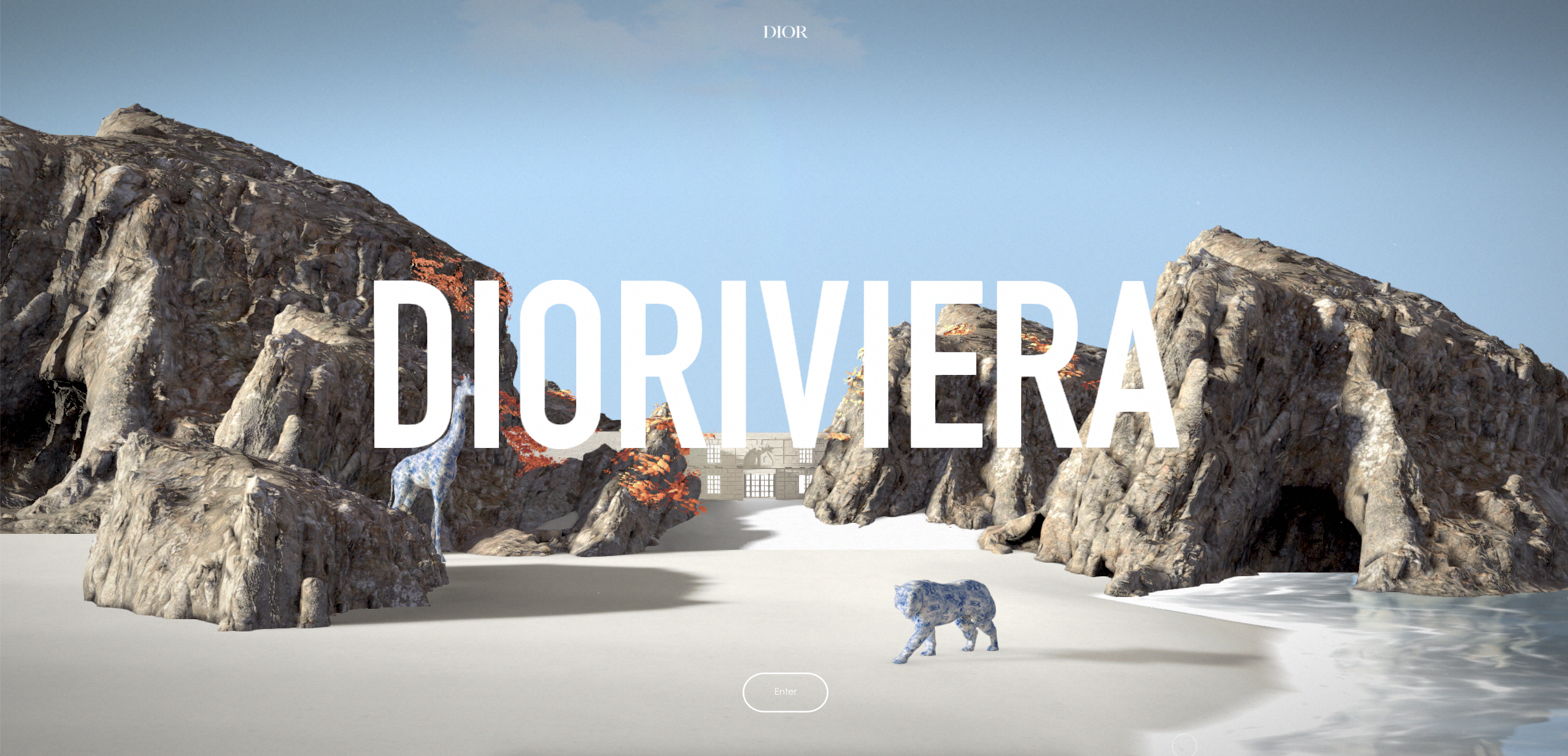
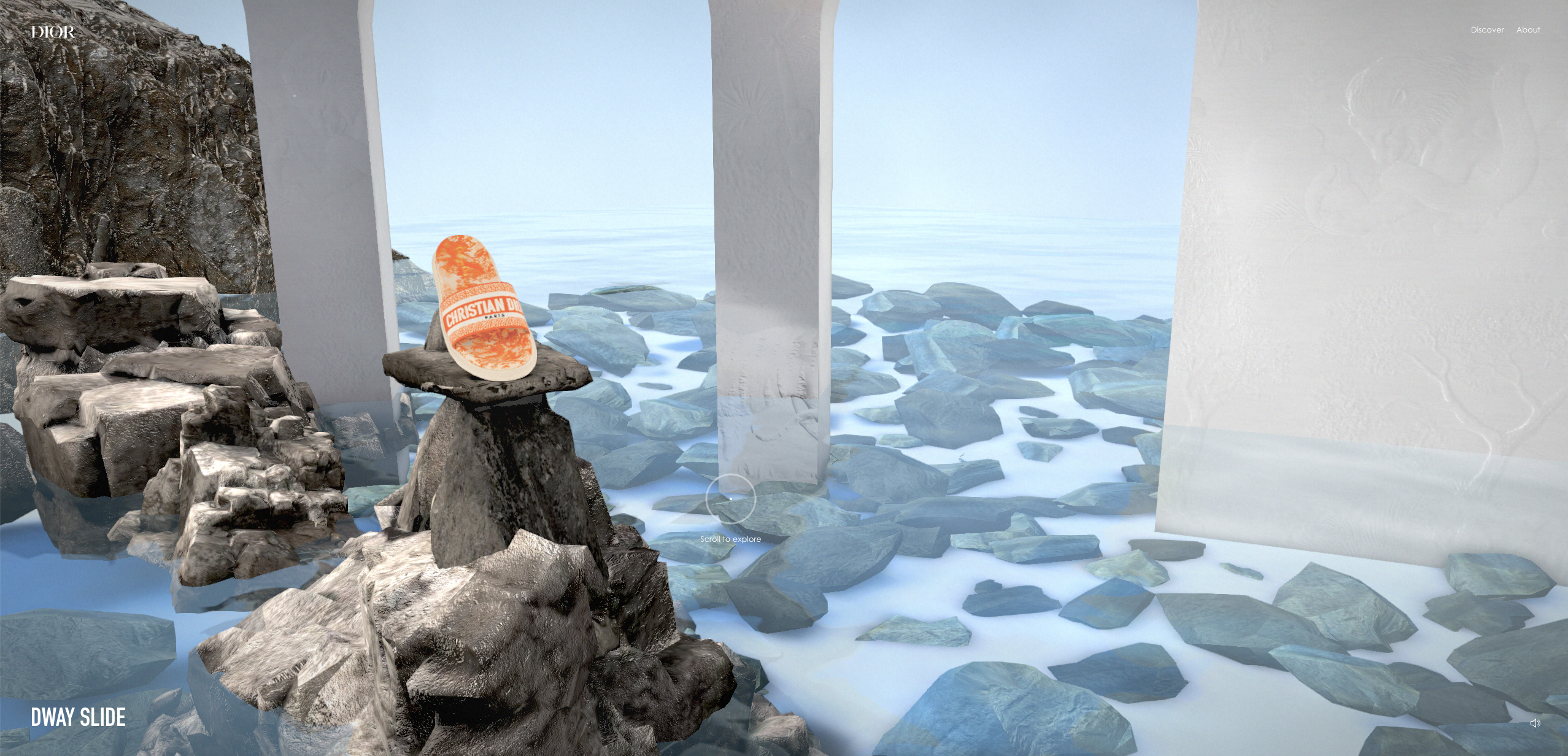
#4. Revolutionizing the Future? Is AI here to stay?
Yes, I think we can all agree that AI is here to stay. The question is in what way. We've seen the amazing images that Midjourney, for example, can create. It can even design an entire website, although it requires some work by the designer.
ChatGPT is also a great tool that creates different texts for you. For example, check out our New Year's post that I wrote. Correction that an AI wrote. 😉
So will the AI take over our jobs? I see AI as a powerful source of inspiration, but it won't take over our jobs. Not for many years anyway. Today an AI doesn't understand the human brain and it lacks empathy. Key ingredients to create good UX as well as communication.
AI will be one of the hottest trends even in 2023 and we will see many cool productions. AI still tends to make designs that have a clear AI stamp in my opinion. To create a good and unique website for example, you have to get away from this.
I don't believe in creating ready-made websites with AI. Yet. But as inspiration it is very powerful. Let's harness the power of AI as a source of inspiration, but if you want to create unique productions, spice it up with your own flavor... 🌶
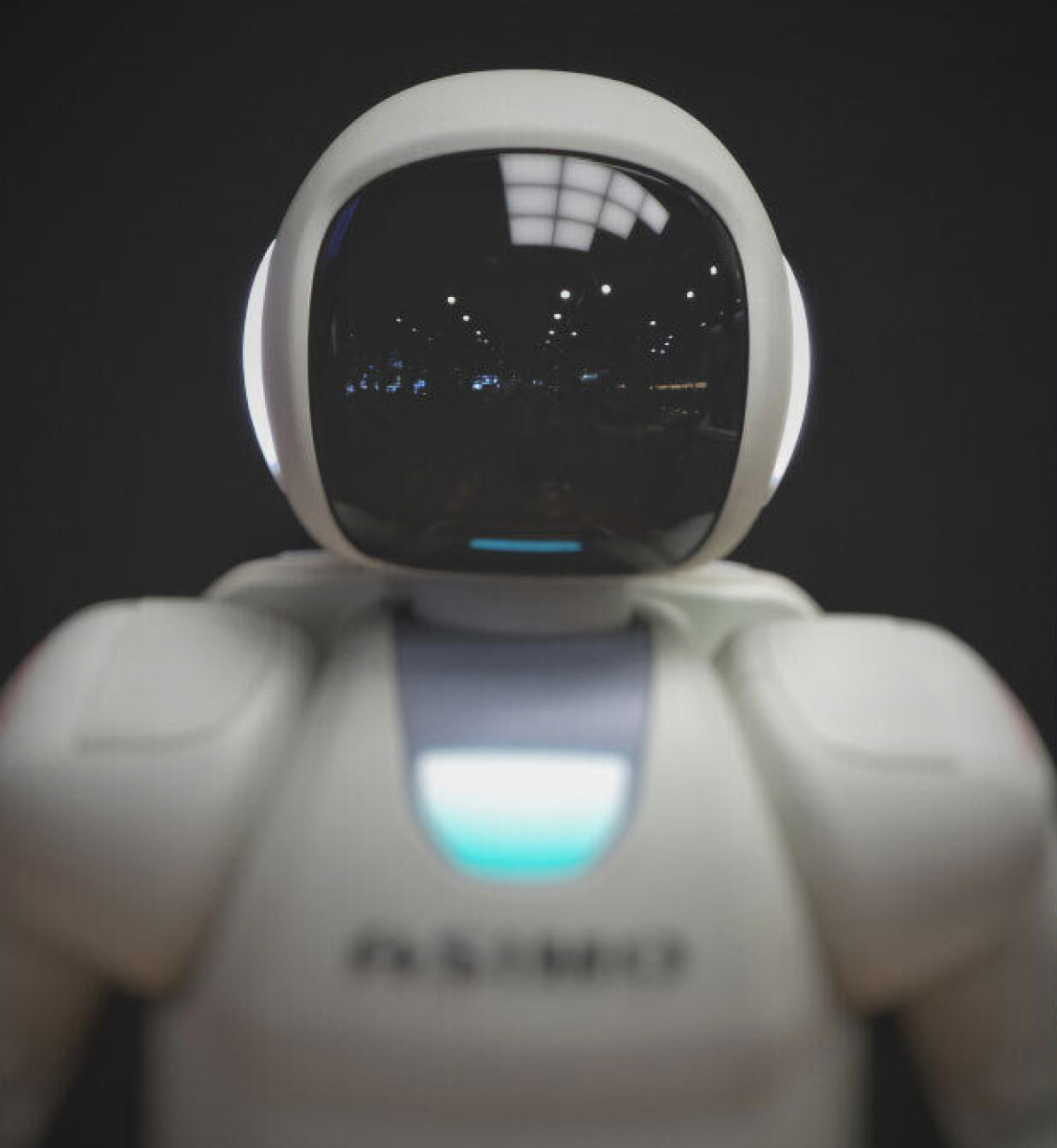
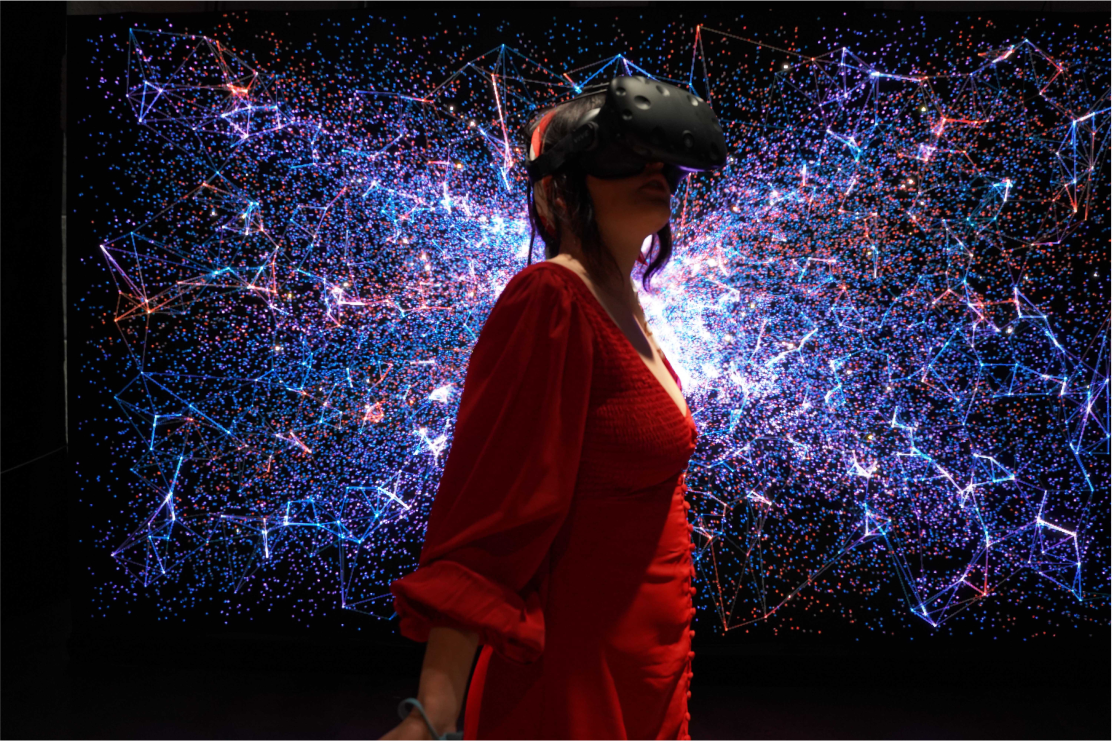
#5. Personalization seems to be leading trend
We will see much more of digital experiences tailored to the user. For example, being able to choose different themes on the website, smart algorithms that adapt the landing page to the user's searches and much more.
Personalisation improves the user experience by making it more relevant and targeted to the individual user. For example, a website or shopping experience can show users products or content that are most likely to be of interest to them, rather than showing them a generic selection. Some find this creepy and invasive of one's privacy. Personally, I think it's quite nice not to see things that are irrelevant to me and instead be served things that interest me.
Personalisation is also likely to increase customer loyalty and retention. If a user feels that a company or website gives them a personalised experience, they are more likely to return and continue to use the service.
This in turn can also lead to increased sales and revenue. By showing users products or content that is more relevant to them, businesses can increase the likelihood of the user making a purchase.
In conclusion, personalization will continue to be a key trend in UX design in 2023. By offering a personalized experience, companies can strengthen their brand, improve the user experience, increase customer loyalty and retention, and increase sales and revenue.
A no-brainer if you ask me. 🤩

#6. Breaking the law... Disruptive design
This trend is actually more directed at UI than UX, but it is so strong that it needs to be reviewed in UX as well.
Disruptive design is simply about throwing all the rules aside and creating something new and attention-grabbing... Hot trends here are Anti-Modes, Neo-brutalism, Throw away the traditional mouse pointer, Overstimulation, Bold color choice, Y2K and the development of darkmode.
It's all about daring to experiment. Never mind what's right and wrong. Create something new. Be yourself and dare. It's not about thinking outside the box, it's about thinking far outside the box.
So how do you translate this into UX work? Are there new and better ways to design a button? Is it really best to have a hamburger menu in the top left corner. Should there even be a hamburger menu? Should you even have a menu? What is an experience? Think new. Think different.
No one remembers a coward. 🦸♀️
#7. Increased accessibility
We can't talk about UX trends for 2023 without mentioning the word accessibility. It will most likely go from being a trend to something you must consider to design for. Accessibility will simply become the norm.
Accessibility is a way of making websites, products and services usable for people with disabilities. It's a trend that has taken off in recent years, and it's expected to continue to be a major focus in the coming year 2023.
According to the World Health Organization, approximately 15% of the world's population lives with some form of disability. This means that ignoring the needs of people with disabilities as a business or organisation means missing out on a significant portion of their potential audience or customer base.
In addition to the potential for increased reach and inclusion, there are also legal requirements for accessibility in many countries.
In conclusion, accessibility is expected to continue to be a key trend in 2023 as more companies and organisations recognise the importance of making their products and services usable to all. By focusing on responsive design, alt text and captions, keyboard navigation, colour contrast and semantic HTML, businesses can ensure that their digital products are accessible to all.
#8. Forget parallax scroll. Welcome immersive scroll
As I've already mentioned, UX design trends are prioritising the experience itself over ease of use and speed in 2023. That said, we all know the frustration of a slow site. It's important to know what you're doing because nobody wants to surf on a slow site... But it's all about creating unique memories with brand experiences over fast user journeys. Using hover effects and scrolling features for your websites is a unique piece of this interactive puzzle.
Advanced scrolling was already hot last year as a UX design trend and this year it has evolved to become even bigger. Think about how you interact with your favorite apps and websites. You scroll through them in many different ways: asymmetrically, in multiple directions, and even combine scrolling with rotating and zooming gestures.
Modern websites feature parallax scrolling, a technique that increases depth and uses multiple scrolling speeds for elements on a single page. In particular, the background scrolls at a different rate than the primary content. Sophisticated scrolling goes a step further and adds extra layers of entertainment and stimulation with unique images. It gives users more information about your brand's personality, hopefully allowing them to connect with you on a more personal level.
Scrolling horizontally is making a comeback, especially for creative websites. Through advanced scrolling, you can create a stronger user experience that will bring more engagement to your brand.
Visit this supercool site: zulu.longines.com
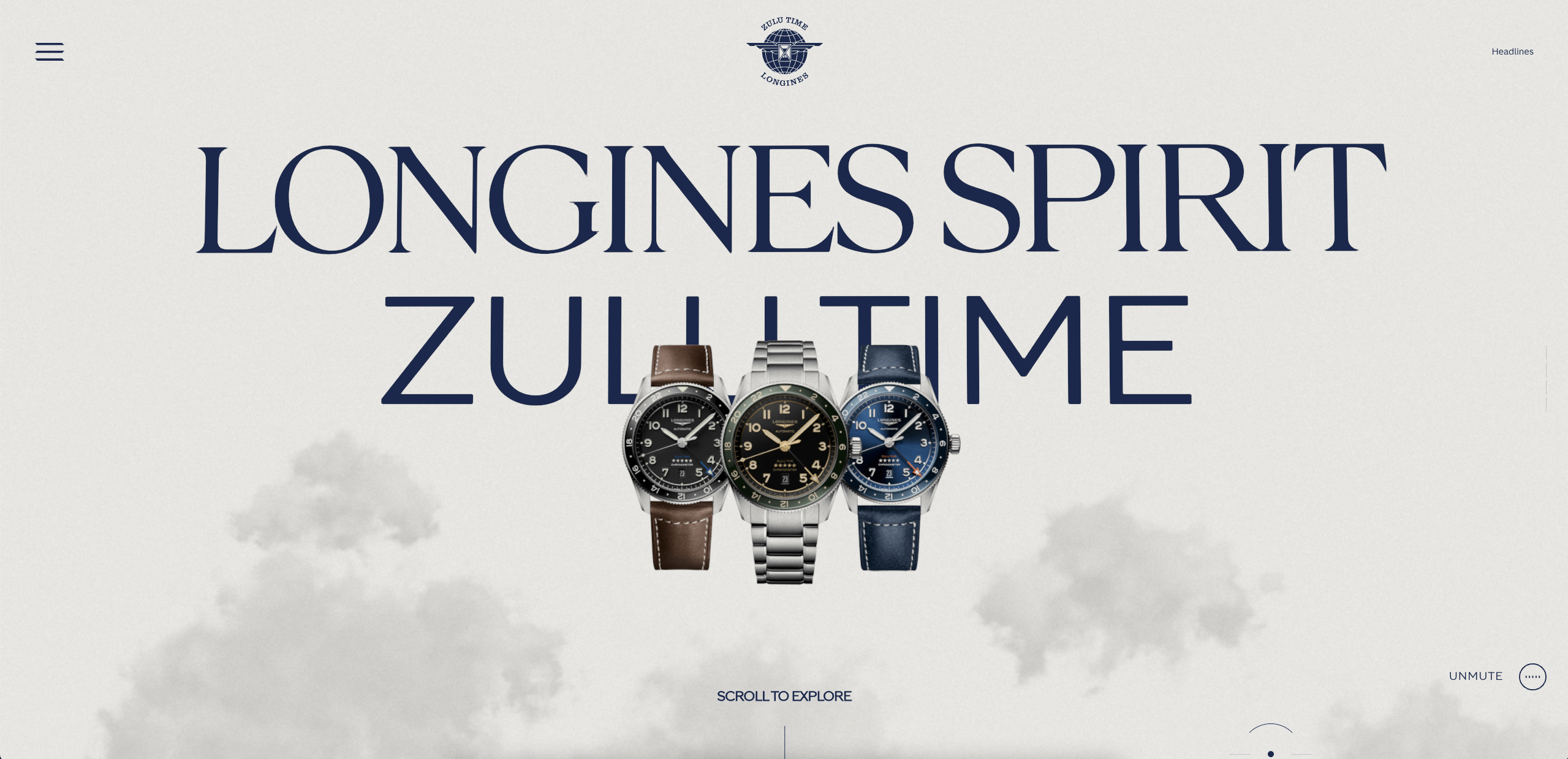
#9. Incorporating AR into everyday life
Is this the year AR will really break through? Yes, at least if we are to believe the trend analyses that are being done.
Augmented reality (AR) is a fast-growing technology that has the potential to revolutionise the way we interact with the world around us. As a trend in UX, AR has the potential to improve the functionality and usability of products, making them more engaging and intuitive for users.
In the coming years, we can expect to see a significant increase in the adoption of AR in various industries, including retail, gaming and education. For example, retailers can use AR to let customers virtually try on clothes or see what the furniture would look like in their home before making a purchase. In the gaming industry, AR can be used to create immersive experiences that take place in the real world. And in the education sector, AR can be used to create interactive and engaging learning experiences that allow students to visualize complex concepts in a more meaningful way.
Overall, the adoption of AR as a UX trend is likely to continue to grow in the coming years as more businesses realise the benefits it can bring. With its ability to increase functionality, improve usability and personalise the user experience, AR has the potential to significantly impact how we interact with the world around us.
#10. Planet centric design
I have two children myself and have been crying out for this approach in view of their future. We have long focused on creating things that put people first. That's nice. But it's time to shift the focus to something more important. Our future and our planet. We designers have a great opportunity to make a difference. We are problem solvers. Let's help solve one of the biggest problems we have, environmental degradation.
Planet-centric design is a dramatic shift in perspective. We need to move from selfishness to ecosystems. The underlying principle is that we are not alone on our planet and that it has limits. Humans have been moving those boundaries for centuries. The ability to think beyond and shape our environments is what makes us human. But our impact comes at a price.
Our ability to look ahead is needed once again to protect the planet and its communities. Planet-centred design allows us to bring the planet we live on back into the design process.
As more and more companies adopt planet-centric design principles, it is likely that this trend will continue to grow in popularity in the coming years. Consumers will increasingly demand products and services that are environmentally friendly, and companies that can meet this demand will have a competitive advantage in the marketplace.
Overall, planet-centric design is a powerful trend in UX design that has the potential to not only create more sustainable products and services, but also improve the user experience and provide value to costumers.
#11. Micro animations
Micro-animations, small and subtle animations that enhance the user experience, are becoming increasingly popular in UX design. These animations can be anything from the floating state of a button to the loading indicator on a web page.
One of the biggest benefits of micro animations is that they add a level of polish and professionalism to a website. They can also help make the user interface more intuitive and easier to use.
As well as improving the user experience, micro animations can also be used to add personality and character to a product or website. By carefully choosing the type and style of animation, designers can help create a unique and memorable brand identity.
As with all design trends, it's important to use microanimation sparingly and purposefully. Overuse can be distracting and disrupt the user experience. It's also important to ensure that animations are smooth and work well across a variety of devices.
Overall, microanimations are a powerful tool for UX designers looking to add an extra level of polish and personality to their products. As the use of microanimations continues to grow in popularity, they will undoubtedly become an increasingly important part of the UX design landscape.
#12. Increased integration. Also in navigation.
Interactive navigation is another top trend in UX design, using animations, fun menus, hover effects and unconventional layouts to create digital solutions that are increasingly fun to use and navigate.
These cool navigation features make websites feel like the user is on an adventure, echoing our previous trend to increase their engagement with your site. It's one of our main reasons for using fancy scroll, hover and reveal effects on navigation menus to distract us from what we're used to, which is clicking through static pages in a hamburger menu.
It spices up your website and guides the user interactively from point A to B in the most intuitive way possible.
In 2023, we will definitely see more integrated navigation. I welcome it! 🤩
Visit site: alfacharlie.co
Visit site: nba.com/jazz/purpleisback
#13. Changing behaviour in Social Media
In recent years, social media apps such as TikTok and Instagram have introduced a number of new features and behaviour that are changing the way users interact with and experience these platforms. These changes are part of a larger trend in user experience (UX) design that aims to make apps more engaging, interactive and personal.
Here are some examples of these new behaviors and how they are shaping the UX of popular social media apps:
Short-form video content: TikTok is known for its short-form video format, where users can create and share 15-second clips to music or other audio. The format has proven to be very popular and has been copied by other platforms, including Instagram and Facebook. The appeal of short-form videos lies in their ability to capture users' attention and keep them engaged, as well as in their potential for creativity and self-expression.
Interactive filters and effects: Apps such as TikTok and Instagram have also introduced a range of interactive filters and effects that allow users to transform their photos and videos in creative ways. These features add a layer of playfulness and fun to the app experience and encourage users to experiment and share their creations.
Personalization and recommendation algorithms: Social media apps also use machine learning algorithms to better understand users' interests and preferences and to tailor their content recommendations accordingly.
In-app shopping and e-commerce: If you asked me 1-2 years ago if I would consider shopping clothes on Instagram, my answer would be a clear NO. Today, I do it all the time.
Many social media apps also include e-commerce features that allow users to buy products directly within the app. This can include in-app shopping features that allow users to browse and purchase products from brands and influencers, as well as integration with external e-commerce platforms such as Shopify. These features make it easier for users to discover and buy products, and they also provide new revenue streams for the apps and their partners.
Overall, these new behaviours and features are changing the way users interact with and experience social media apps. While they may offer new opportunities for creativity and connection, they also raise questions about privacy, data collection and the potential for manipulation and dependency. As these apps continue to evolve, it is important to consider both their benefits and potential risk.
#14. Content becomes more important
UX writing and content design are key trends in 2023. These disciplines focus on creating clear, concise and compelling digital content that enhances the overall user experience of a product or service.
UX writing plays a crucial role in guiding users through the user journey, helping them achieve their goals and providing them with the information they need. Good UX writing is easy to read, understand and follow, and it helps to create a cohesive and seamless user experience.
Content design, on the other hand, involves designing the structure, organisation and presentation of content to make it as useful and valuable as possible. It involves analysing users' needs, creating content hierarchies and layouts, and ensuring that content is easy to read and scan. Content design plays an important role in helping users find the information they need, understand complex concepts and complete tasks.
#15. I hope you like it big and bold...
Like the typography nerd I am, I love this trend!! 🤩 Big and bold typography has been a popular trend in UX design in recent years, and it looks like it's here to stay. 🥳 The trend involves using large, attention-grabbing font sizes and styles to draw the user's eye and create a strong visual hierarchy on the page.
There are several reasons why designers choose to use large and bold fonts in their designs. One reason is that it helps to grab the user's attention and make important information stand out. This is especially useful on websites and apps with a lot of content, as it helps lead the user to the most important information.
Another reason is that large and bold typography adds personality and character to a design. By using unique font styles and sizes, designers can create a strong visual identity that helps to distinguish their brand from others.
In addition to aesthetic appeal, large and bold typography can also improve usability. Large fonts are easier to read, especially on smaller screens, and bold text can help highlight important links and calls to action.
Overall, large and bold typography is a trend that can add visual interest and improve the user experience on a website or app. It's a trend that is likely to continue to be popular in the coming years.
#16. New Dawn for UX in the Metaverse and Web3
Web3 is the third generation of the World Wide Web, which envisages the development of a decentralised and open Internet. As we move into 2023, Web3 technology is expected to become more prevalent, leading to a change in the design of the User experience.
One of the key features of web3 is the use of blockchain technology, which allows decentralised applications (dApps) to be built on top of it. This means that dApps can operate without a central authority, making them more secure and transparent.
In terms of UX, this shift to decentralised systems is likely to lead to a focus on building user interfaces that are easy to use and understand for the average person. With the complexity of blockchain technology, it will be important for designers to create interfaces that are intuitive and user-friendly.
Another trend that we may see in web3 UX design is the use of non-functional tokens (NFT). NFTs are unique digital assets stored on the blockchain, and they have received a lot of attention in recent years due to their use in the sale of digital art and collectibles. As the use of NFTs increases, we may see more designers incorporating them into their work and creating new and innovative ways for users to interact with them.
All in all, the introduction of Web3 technologies will bring significant changes to UX design, and it will be exciting to see how designers adapt and innovate in this new landscape.
#17. Creating value through qualitative UX research
One trend that we predict will grow stronger in 2023 is the use of qualitative UX research to create value.
For us at QueensLab, this trend is given, and we don't really see it as a trend, but a very important step in understanding the user and creating the best digital experience possible.
Qualitative UX research involves gathering in-depth insights and understanding about users' thoughts, feelings and behaviours through methods such as interviews, focus groups and observation. This type of research is particularly useful for uncovering users' underlying motivations and needs and can help inform design and decision-making.
By gaining a deep understanding of users' needs, preferences and pain points, companies can create products and services that are truly tailored to their target audience and that meet their needs in a meaningful way. This leads to stronger branding, increased customer satisfaction, loyalty and ultimately revenue.
By examining user behaviour and needs in detail, companies can discover areas where they can stand out from the competition and offer unique value to their users. This can be particularly useful in crowded markets where it can be difficult to differentiate based on features alone.
Another way that qualitative UX research can add value is by helping companies identify and address potential problems or challenges early in the design process. By gathering detailed insights from users, companies can identify potential issues and address them before they become more significant problems. This can save time and resources and ultimately lead to a more successful product or service.
#18. Design with UX for different devices
Designing with UX in mind has long been an important aspect of creating successful products, and as technology and devices continue to evolve, it's more important than ever to consider how users will interact with your product on different devices.
One of the key challenges in UX design is ensuring that the User Experience is consistent and seamless across devices. This means designers need to think about how the user will interact with the product on a desktop, laptop, tablet and smartphone and design the user interface accordingly.
We live in a world surrounded by all types of devices and more advanced multi-device experiences are becoming more common, but are we designing them with multi-device experiences in mind yet?
Understanding how to design for multiple devices is now a necessary skill for UX designers. Knowing how to map the user journey - how a user might go from one device, such as a mobile, to a desktop computer or TV screen, and then design and understand based on that can be crucial.
#19. Overstimulation
Have you seen a website lately whose aesthetic was so cool and intrusive that you had to stop for a moment to take it in? In 2023, many Generation Z brands will advocate maximalism so devotedly that your mind will blow away. 🤯
Designers who break the design rules we've grown accustomed to are dropping minimalism left and right, especially when the brand is targeting a younger audience. Faced with an uncertain future, Generation Z is looking for hope, comfort and connection. They turn to bright colours for strength and optimism and buy brands that understand them.
When you consider how instantly many in this audience experience their lives - from swiping through dates, doing their shopping or visiting a gallery - without even leaving their bed, it's understandable that brands need to go above and beyond to satisfy their senses. When it comes to digital design, that means overstimulating users with an aesthetic so individual, authentic and powerful that it almost knocks you off your feet. It's as if white space didn't exist and balance was considered tragic, the design trend of overstimulation involves animating every corner of your website.
Be aware that these sites can negatively impact accessibility. So make sure all your text is easy to read, that audio and video playback can be muted or paused, and that images contain alt text.
Visit site: polyesterzine.com
Visit site: luakabop.com
Visit site: florafantasy.gucci.com
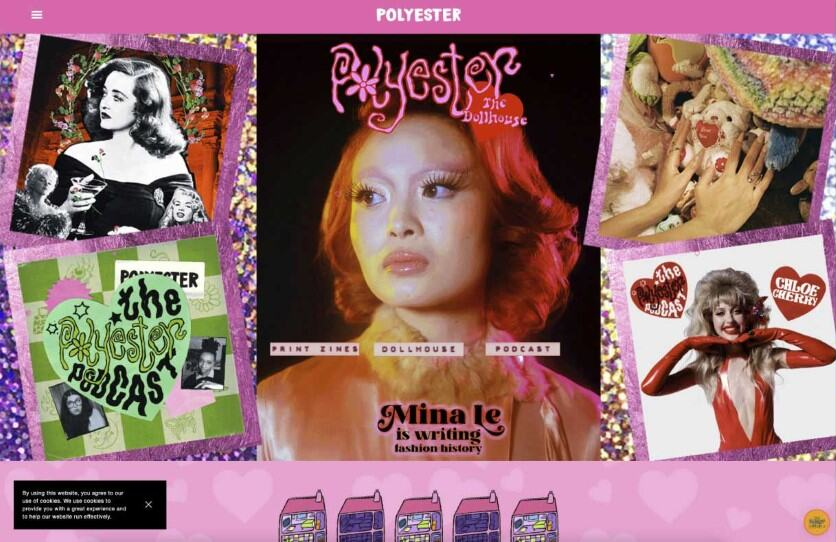
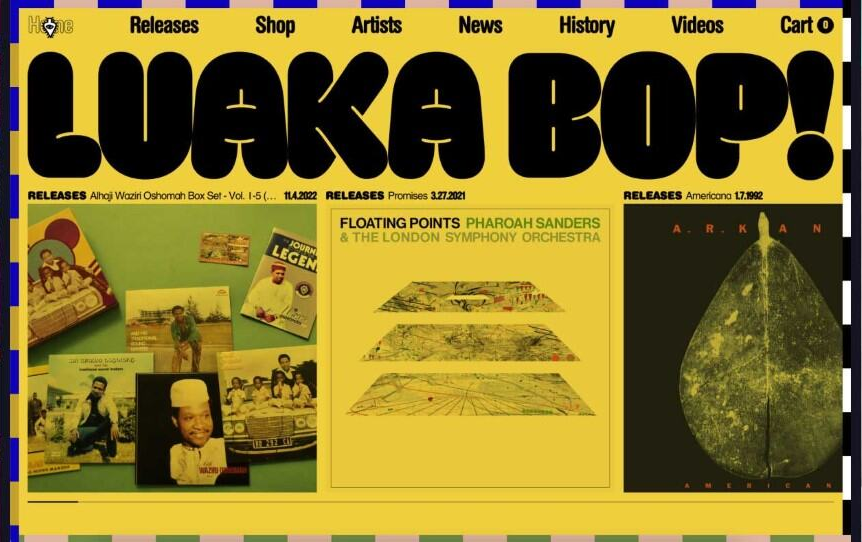
#20. Designing for the Future
2023 promises to be a transformative year for UX. The big trends on the horizon - many of which have matured over a few years - will reach a critical stage, changing how designers create experiences, how companies engage with customers and how customers perceive brands.
Companies that can navigate these seismic shifts while continuing to delight and engage customers will be the successful companies of the future. But there will also be losers, those who fail to adapt quickly enough to changing customer expectations.
UX will prove to be the crucial difference.
Well, let’s wrap this article up with one last thing...
In 2023, websites will demand your attention more than ever. Complex, immersive interactive experiences combined with a plethora of special hover and scroll effects will work together to dominate every millimetre of web pages. These trends are breaking UX laws and starting a revolution, and we're here for it.
Do you want your digital solution to offer a seamless and beautiful User Experience?
Our talented designers will take care of it. 👑🚀🤩